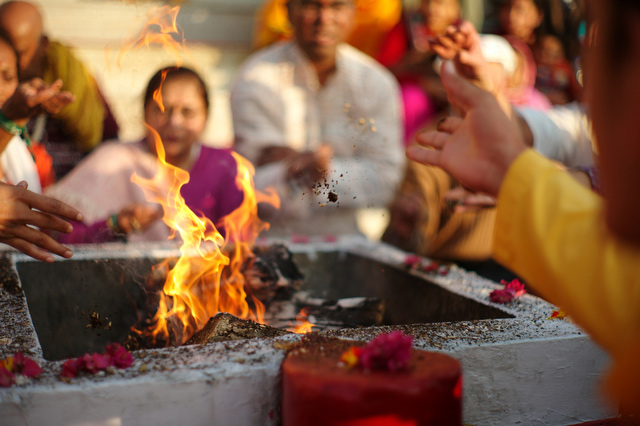
by Gwen Burdick
Fire, or Agni in Sanskrit, is one of the five basic elements of creation. It dominates the Pitta dosha of Ayurveda. Agni allows for heat, light, color and vision and is essential for combustion, cooking and our ability to digest food. When the element of fire within us is unsupervised, it will lead to mental frustration and irritability. Anger, aggression, fury, and rage can easily follow. It is the root cause of most combativeness. Agni also expresses as enthusiasm and desire. Its power can be used to satisfy one’s own needs and wants, or it can be used for the benefit of all. In its highest expression, however, Agni is the source of self-discipline, purification and transformation.
The Vedic fire ceremony is an instrument that harnesses this sattvic quality of Agni. The Vedic fire ritual, known as Homa, Puja or Yajna, is considered sacred. This ancient ritual is performed at precise times depending on celestial events. Daily sunrises and sunsets, monthly lunation cycles or major planetary transits are used as guides for timing. In mundane life they are used in celebration of birth, marriage or death. A “kunda”, a square pit that faces all four directions, is used to contain the fire. Practitioners offer into it gifts of grains, ghee, herbs and seeds as specific mantras are repeated. The sacred fire coupled with prayerful intention removes fear, spreads joy, burns karma, purifies the environment and creates conditions for peace and prosperity. The fire ceremony is among the most powerful of spiritual practices because it beckons the burning up of the ignorance, delusion and obstacles that keep us from the success of knowing our own divinity.
